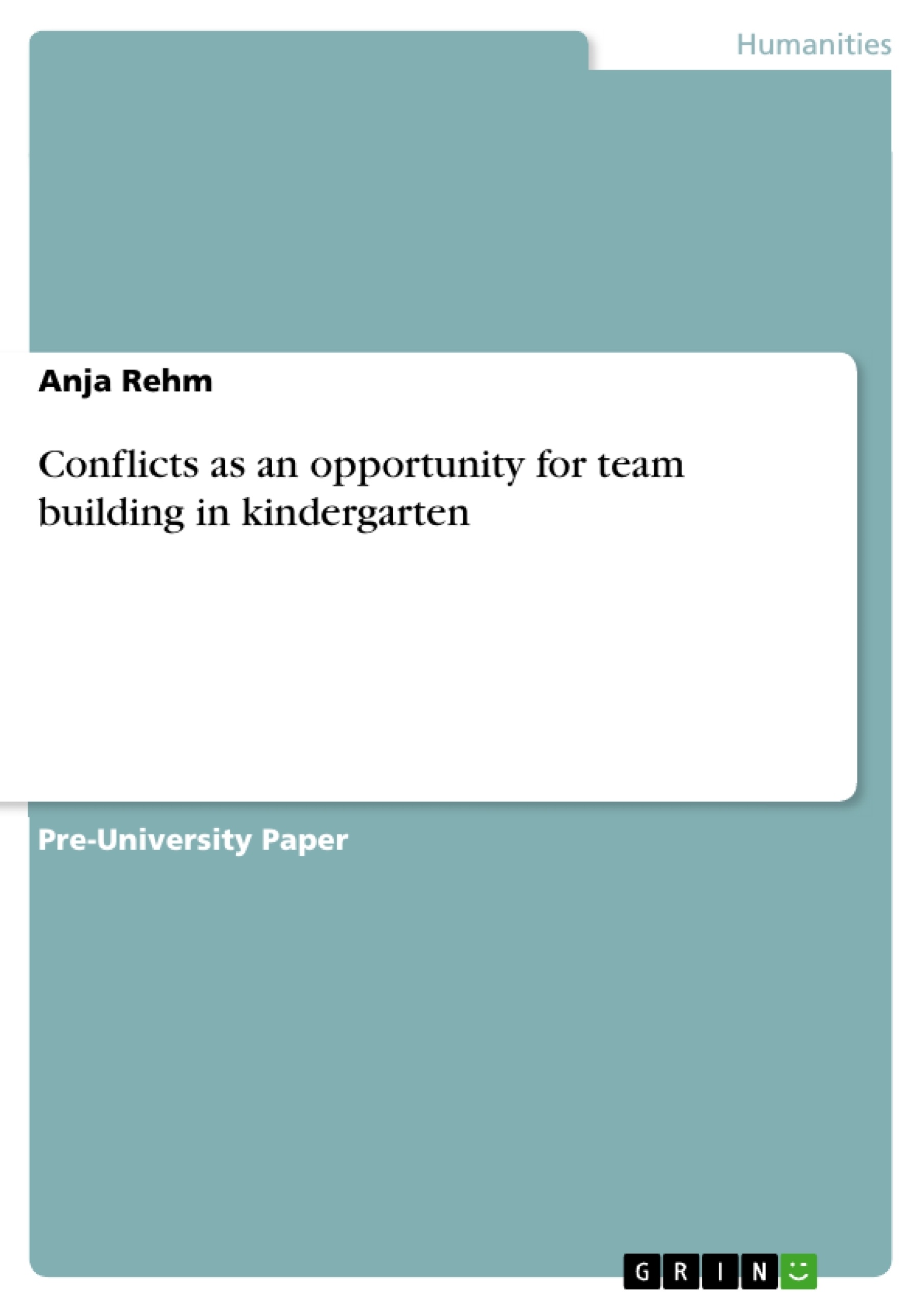Conflict management, what does it involve? I think it is a very important and far-reaching topic, which unfortunately did not get the necessary attention in my training as a state-certified kindergarten teacher. How do I deal with conflict situations? The topic stimulated me to reflect on myself and made me much more aware of how I deal with conflicts, and I also observed my colleagues' behaviour in conflict situations more intensively. It was noticeable that conflicts were very often avoided by people taking a back seat. I myself experimented with the different models and also with the confrontation formula in conflicts . How do I deal with conflict situations? The topic stimulated me to reflect on myself and made me much more aware of how I deal with conflicts, and I also observed my colleagues' behaviour in conflict situations more intensively. It was noticeable that conflicts were very often avoided by people taking a back seat. I myself experimented with the different models and also with the confrontation formula in conflict discussions. I experienced the conflicts differently and the way I dealt with colleagues and parents was also "different" than before.I asked myself why. The only way I could explain it was that I was consciously aware of the conflict and wanted to resolve it.
Inhaltsverzeichnis (Table of Contents)
- My motivation
- Introduction
- What is a conflict?
- Definition conflict
- Intrapersonal conflict
- Interpersonal conflict
- Types of conflict and their causes
- The distribution conflict:
- Perception conflict.
- Value conflict……………………….
- Role conflict...........
- Conflict of objectives/ conflict of interest.
- Organization/information conflict
- The relationship conflict:
- Conflict analysis.
- 10 questions about conflict diagnosis.......
- The 9 Stages of Conflict according to Friedrich Glasl
- Conflict resolution models
- Win-win model
- Compulsion/ Pressure.
- Yield
- Avoid
- Compromise
- Direct confrontation.........
- A conflict discussion is pending....
- Rules in conflict discussion
- Attitude in conflict discussion
- Confrontation formula
- Seize the opportunity of conflict.
- Prerequisite in the team...
- The role of management .
- Conclusion..
- Own reflection
Zielsetzung und Themenschwerpunkte (Objectives and Key Themes)
This seminar paper examines the importance of conflict management in kindergarten settings, highlighting the potential of conflicts to contribute to team building. The author aims to explore different types of conflicts, their causes, and effective methods for conflict resolution, emphasizing the significance of viewing conflicts as opportunities for growth and development.
- Understanding Conflict: Defining and categorizing different types of conflicts in the context of kindergarten.
- Conflict Analysis: Utilizing frameworks and models to diagnose and understand the nature of conflicts.
- Conflict Resolution Strategies: Exploring various approaches to managing and resolving conflicts, focusing on the win-win model and effective communication techniques.
- Harnessing Conflict for Team Building: Examining how conflicts can be utilized as opportunities for fostering teamwork and collaboration within a kindergarten environment.
- Leadership Role in Conflict Management: Discussing the responsibilities of leaders in creating a conducive environment for conflict resolution and team building.
Zusammenfassung der Kapitel (Chapter Summaries)
The paper starts by outlining the author's motivation for studying conflict management in kindergarten, emphasizing its importance for both personal and professional growth. The introduction sets the stage for the discussion by highlighting the prevalence of conflicts in any cooperative setting, particularly in kindergarten where diverse values, ideas, and experiences converge.
The paper then dives into a comprehensive definition of conflict, differentiating between intrapersonal and interpersonal conflicts, with a particular focus on the latter, which is most relevant to the kindergarten context. The author goes on to analyze various types of conflicts, including distribution conflicts, perception conflicts, value conflicts, role conflicts, conflicts of objectives, organization/information conflicts, and relationship conflicts.
Moving into the realm of conflict analysis, the paper explores a set of 10 questions that are crucial for diagnosing and understanding conflicts. It also introduces the 9 Stages of Conflict according to Friedrich Glasl, providing a framework for navigating different conflict intensities. Different conflict resolution models are presented, including the Win-win model, which emphasizes collaborative problem-solving. The paper examines various strategies within the Win-win model, such as compulsion/pressure, yield, avoid, compromise, and direct confrontation, offering valuable insights into different approaches to conflict management.
The paper concludes by emphasizing the importance of seizing the opportunity of conflict by promoting a culture of open communication, mutual respect, and collaborative problem-solving within the kindergarten team. The author underscores the vital role of leadership in facilitating constructive conflict management and fostering a positive and supportive environment for both staff and children.
Schlüsselwörter (Keywords)
This seminar paper focuses on the core concepts of conflict management in kindergarten, emphasizing the importance of viewing conflicts as opportunities for team building. Key terms and concepts include conflict definition, types of conflicts, conflict analysis, conflict resolution models, win-win model, communication strategies, team building, and leadership role in conflict management. The paper explores the application of these concepts within the specific context of kindergarten settings, offering practical insights and valuable recommendations for educators and leaders.
- Citar trabajo
- Anja Rehm (Autor), 2012, Conflicts as an opportunity for team building in kindergarten, Múnich, GRIN Verlag, https://www.grin.com/document/1157662



